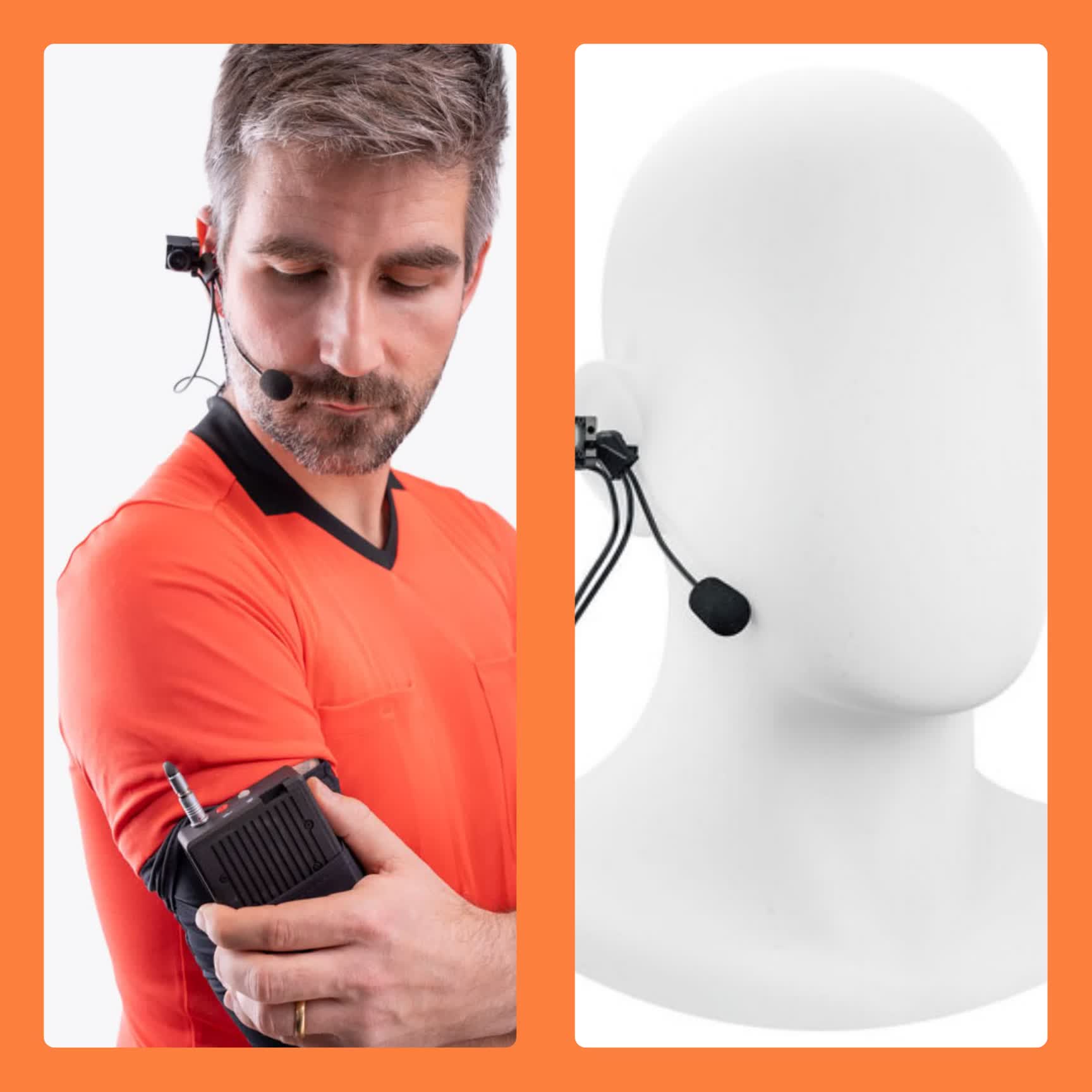A RefCam (Referee Camera) is an innovative special type of broadcast point-of-view camera used in sports and worn by a referee during the game. Recently, its impact on football has become a subject of discussion among stakeholders.
A point-of-view shot (also known as POV shot, first-person shot or subjective camera) is a film technique where the camera is positioned to show what a certain character is seeing from their perspective.
In football, RefCam technology involves referees wearing cameras on their right ear, connected to a microphone and transmitter — which sends video to the broadcasters. Two wires – one for the camera and the other for a microphone – are put on the back of the referee’s shirt and a transmitter is placed in a shorts pocket.
Likewise, RefCams are equally being used in other sports like American football, ice hockey, field hockey, baseball and many more.
Basically, the idea of a RefCam is to offer TV viewers a unique view of football action, but no controversial incidents will be shown. While broadcasters will be able to offer unique angles on goals and saves – as well as close-up live video and sound from the pre-match coin toss – viewers won’t get to see penalty decisions or other disputable moments from the new camera angle.
Moreover, it will not offer live footage but will be used in replays of match incidents from a different perspective. Fans could get the perspective of goals, free kicks, tackles and attacking moves from the view of the referee immediately after they happen.
RefCam trials in football
RefCams have been trialled by officials in grassroot football in England over the past two seasons as a tool to reduce abuse directed at referees.
Furthermore, at the end of last season, Jarred Gillett made history as he became the first Premier League referee to wear the RefCam in a game between Crystal Palace and Manchester United.
Also, the Bundesliga tested the RefCam last season in a game between Eintracht Frankfurt and VfL Wolfsburg to provide insights into the referee’s perspective and the work of the VAR in a short documentary.
FIFA allowed the use of cameras on a referee to be used at the 2025 FIFA Club World Cup. At the tournament, RefCam footage was shown on big screens at the stadiums, as well as being broadcast by global rights holder Dazn during the games.
Having been impressed by the Club World Cup trial, FIFA is expected to approve the use of RefCams for the 2026 FIFA World Cup.
Pierluigi Collina, the Chairman of the FIFA Referees Committee, said that the RefCam trial at the Club World Cup went beyond expectations.
Notably, in the group stage match between Atlético Madrid and PSG, the referee did not see a handball incident by an Atlético defender because a player blocked his line of vision. The Video Assistant Referee (VAR) alerted the referee who awarded a penalty to PSG after reviewing the incident on the pitchside monitor.
“From this RefCam, (it) was absolutely clear that the referee could not have seen that incident live on the pitch,” Mr Collina said.
Following its success at the tournament, the International Football Association Board (IFAB) approved the extension of the trial to domestic and international competitions worldwide.
The Premier League tested RefCam in selected matches during the opening round of fixtures for the 2025/26 season, with a view to making the innovative technology a permanent feature of live TV games for the rest of the season.
How the innovative impact of RefCam enhances football viewing for spectators
RefCam optimises play by capturing every interaction and providing viewers with an immersive and riveting experience. RefCam make matches safer, fairer and even more exciting for spectators.
It also enriches live broadcasts, post-match analysis, and training with immersive, first-person views that enhance both decision-making and fan engagement.
Features and types of RefCams

Being lightweight and convenient, RefCam features advanced technology for superior visual and audio outputs, as well as innovative design to ensure comfort for referees.
RefCams can be worn in a variety of ways across different sports, so it’s easy for officials to customise their gear and deliver the best footage. To capture film and audio while officiating at a match or game, the RefCam can be worn in different ways, as seen in other sports apart from football:
- Headset with Mechanical Stabilisation
To avoid unwanted camera movement with integrated mechanical stabilisation, the RefCam is affixed to headgear, such as a cap or helmet, with an umbilical cable connecting the camera to a body-worn military-spec patch antenna on a transmission vest.
- Headset without Mechanical Stabilisation
This allows viewers to immerse themselves in the experience and see the game exactly as the officials do. The latter wear this particular RefCam headset without mechanical stabilisation. The headset is lightweight and easy to wear, while the fitted chest vest facilitates live transmission.
- Chest Vest
The chest-mounted RefCam is worn with a fitted vest for optimal comfort. If the headgear isn’t essential or it obstructs the referee’s view, a chest-mounted speciality camera is the ideal way to capture footage from their POV without impacting an official’s performance.
In football so far, referees wear cameras on their right ear, connected to a microphone and transmitter — which sends video to the broadcasters. Two wires – one for the camera and the other for a microphone – are put on the back of the referee’s shirt and a transmitter is placed in a shorts pocket.
Display
Today’s audience expects super high-quality visuals, especially when they’re watching a big match or an important sporting event.
Capturing footage in HD-SDI output, RefCams ensure optimal image quality at all times. With in-built image stabilisation and ultra-low latency, viewers benefit from the image clarity and live action for an unforgettable spectator experience.
Audio Features
One of the benefits of broadcasting with RefCam is that viewers get to not just see but equally hear the actions on the pitch directly from a referee’s point-of-view.
From player interactions and referee rulings, viewers can experience the events in real time with RefCams.
The RefCam is expected to take football, and sports in general, to the next level with its advanced technology that empowers sports broadcasters to film from a variety of new perspectives and gives viewers the opportunity to experience the action in numerous different ways.
Additionally, it allows at-home and on-the-go spectators to view real-time footage directly from the referee’s perspective, RefCam elevates the game to another level entirely.



